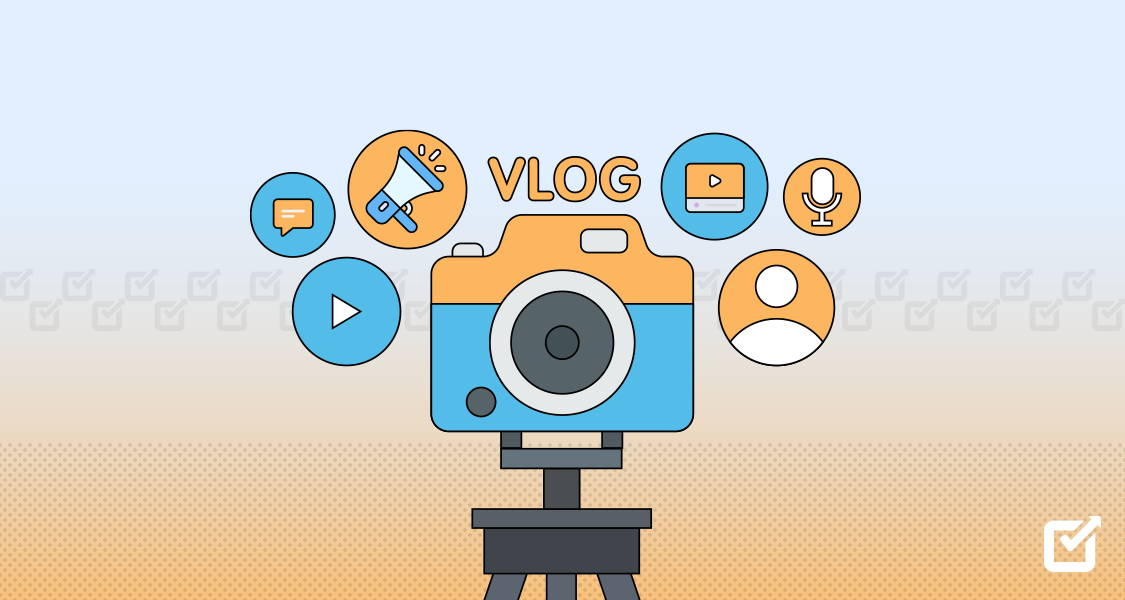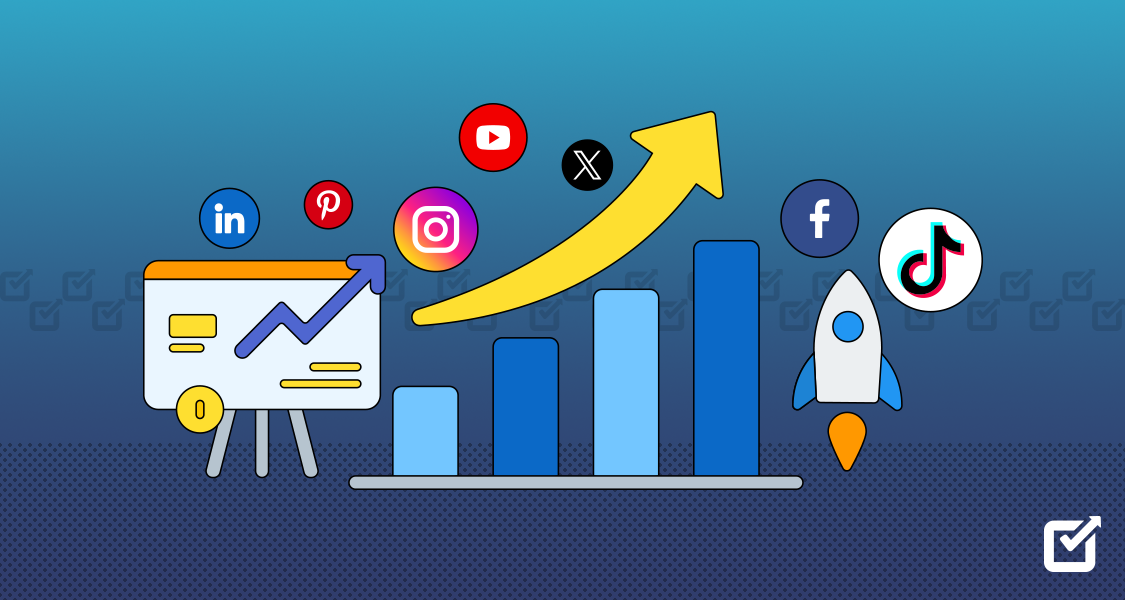Have you ever scrolled through YouTube and stumbled upon a video that feels more like catching up with a friend than watching a carefully edited production? Well, you, my friend, have just encountered the wonderful world of vlogs!
Nowadays, vlog creators are like the rock stars of the internet. They’re living the dream, getting paid to do what they love, whether it’s traveling the world, taste-testing weird foods, or just goofing around in front of the camera. And the best part? They’re raking in the cash while they’re at it!
But, what is a vlog? You’re probably wondering. Well, if you’ve got a knack for storytelling, a camera, and maybe a quirky personality to boost, it’s in your best interest that you know a thing or two about vlogging.
Vlogs (short for video blogs) have become a massive part of the online content scene, and for good reason. They’re a fantastic way to share your experiences, interests, and even your cat’s latest antics (because, let’s face it, the internet LOVES cats) with the world.
But what is a vlog, and how do you start creating one in 2024? Buckle up because, in this blog, we’ll be discussing all things vlog-related!
Our guide will include things like content ideas, vlogging strategies, and the art of using social media management tools like Social Champ for consistent posting.
So let’s get started!
What Is a Vlog?
A vlog, short for “video blog,” is a form of online content creation where individuals record and share videos documenting their lives, thoughts, experiences, or areas of expertise. Unlike traditional blogs that primarily rely on written content, vlogs use the power of video marketing to connect with audiences in a more personal and engaging way.

Vlogs can cover a wide range of topics, from daily vlogs chronicling the vlogger’s day-to-day activities to niche-specific vlogs focusing on subjects like travel, fashion, gaming, or product reviews. The medium’s versatility allows vloggers to explore their creativity and build communities around shared interests.
Excited to Try Social Media Vlogging? Social Champ’s Got You!
Explore the power of seamless scheduling, engaging content creation, and strategic promotion with our hassle-free social media management tool!
With the rise of social media platforms like YouTube, TikTok, and Instagram, vlogs have become an increasingly popular way for creators to share their stories, showcase their talents, and build a loyal following.
By providing a glimpse into their lives and offering valuable insights, vloggers can establish a strong connection with their viewers, fostering a sense of authenticity and relatability that traditional media often lacks.
Moreover, successful vloggers can monetize their content through various methods. This includes earning ad revenue, securing sponsorships, participating in affiliate marketing programs, selling merchandise, and even receiving support through crowdfunding platforms.
These monetization opportunities enable creators to turn their passion for vlogging into a sustainable career or business venture.
Related Article: 100+ Creative YouTube Video Ideas: Your Go-to Guide for 2025
Who Are Vloggers
Vloggers create and publish video blogs, or vlogs, on various online platforms. They come from diverse backgrounds and age groups, united by their passion for storytelling, sharing their experiences, and connecting with audiences through the power of video.
At their core, vloggers are content creators and storytellers who use video as their primary medium. They can be:
- Lifestyle Vloggers: These vloggers document their daily lives, routines, adventures, and personal experiences, allowing viewers to follow along and feel like part of their journey.

A snapshot of a lifestyle vlog on YouTube - Subject Experts: Many vloggers are experts in fashion, beauty, gaming, technology, or cooking. They share their knowledge, tips, and insights through informative and educational video content.

A snapshot of vlogs by subject matter experts on YouTube - Entertainers: Some vloggers primarily entertain their audience through skits, challenges, pranks, or comedic commentary on various topics.
- Reviewers: Product reviewers, whether it’s for tech gadgets, books, movies, or any other consumer goods, use vlog video reviews to share their honest opinions and recommendations with their viewers.
- Influencers: As vloggers build a substantial following, they can become influencers in their respective niches, collaborating with brands and shaping consumer trends.
How Does Vlogging Work
Vlogging is a process that involves several key steps to create and share video content regularly. Here’s how it typically works:
- Ideation and Planning: Vloggers start by conceptualizing their video ideas and determining the topic, structure, and overall approach they want to take. This may involve brainstorming, researching, and outlining the content to ensure a cohesive and engaging narrative.
- Equipment Setup: Depending on the complexity of the vlog, vloggers use various equipment, such as cameras, microphones, lighting rigs, and tripods, to capture high-quality video and audio. Many vloggers start with entry-level equipment like smartphones or webcams and upgrade as their channels grow.
- Recording and Filming: This is the core part of vlogging, where vloggers record themselves talking, demonstrating, or capturing various activities. Vloggers often employ different filming techniques, such as on-the-go recording, staged setups, or a combination of both, to create a diverse and visually appealing viewing experience.
- Editing and Post-Production: After recording the raw footage, vloggers use video editing software to trim, arrange, and enhance their videos. This may include adding transitions, graphics, music, and other effects to make the content more polished and engaging.
- Content Optimization: Before publishing, vloggers optimize their videos for better visibility and discoverability. This includes writing compelling titles and descriptions and adding relevant tags and thumbnails to attract potential viewers.
- Publishing and Promotion: Once the video is ready, vloggers upload it to their chosen platforms, such as YouTube, Instagram, TikTok, or their own website. They then promote their content through social media channels, email lists, and other marketing tactics to reach their target audience.
- Audience Engagement: Successful vlogging involves actively engaging with the audience by responding to comments, answering questions, and fostering a sense of community around the channel. This helps build loyalty and retain viewers.
- Analytics and Improvement: Vloggers analyze their video performance metrics, such as views, engagement rates, and audience demographics, to understand what resonates with their viewers. They use these insights to refine their content strategy and continuously improve their vlogging skills.
Related Article: How to Become a YouTuber in 2025 – A Detailed Checklist
What Is the Difference Between a Blog and a Vlog
While blogs and vlogs share the goal of creating and sharing content with an audience, they differ in their primary delivery medium. A vlog (video blog) is a content platform where creators share videos on various topics. Vlogs primarily use video-based content, often including visual elements, narration, music, and special effects.
Viewers engage with vlogs by watching, liking, commenting, sharing, and subscribing to the creator’s channel.
Here are the key differences between a blog and a vlog
- Medium: The fundamental difference lies in the medium used to convey information. Blogs primarily rely on written content, such as articles, essays, or posts, while vlogs (video blogs) use video as the primary medium for sharing content.
- Content Format: Blogs typically consist of text-based content accompanied by images, infographics, or other visual elements. Vlogs, on the other hand, are entirely video-based, with the creator directly addressing the audience through recorded footage.
- Delivery Method: Blogs are typically published on websites or platforms designed for written content, such as WordPress or Blogger. Vlogs are primarily hosted and distributed on video-sharing platforms like YouTube, TikTok, Instagram, or dedicated vlogging websites.
- Audience Engagement: While blogs allow audience engagement through comments and discussions, vlogs offer a more personal and interactive experience. Vloggers can directly address their viewers, respond to comments, and foster a stronger sense of community and connection.
- Content Structure: Blogs often follow a more structured format, with distinct sections, headings, and paragraphs. Vlogs, however, tend to be more conversational and free-form, allowing the vlogger to communicate more naturally and spontaneously.
- Production Process: Creating a blog post typically involves writing, editing, and adding visual elements. Vlogging requires additional steps like filming, video editing, audio editing, and potentially more complex production techniques.
- Multimedia Integration: While blogs can incorporate multimedia elements like videos, images, and audio, vlogs are inherently multimedia-based, with video as the primary content format.
The choice between a blog and a vlog depends on the creator’s preferences, content format suitability, and audience engagement preferences. Some creators may even combine both formats by incorporating written blog posts alongside video content on their platforms.
What Are the Benefits of Vlogging in 2025?
Vlogging offers numerous benefits as video content continues to dominate the online landscape, and audiences increasingly crave authentic, engaging, and visually appealing content. Here are some of the critical advantages of vlogs:
- Increased Audience Engagement: Videos have the power to capture attention and emotionally connect with viewers in a way that text-based content often struggles to achieve. Vlogging allows creators to establish a more personal connection with their audience, fostering a sense of community and loyalty.
- Multimedia Storytelling: Vlogs offer a dynamic and immersive way to share stories, experiences, and knowledge. By combining video, audio, and visual elements, vloggers can create captivating and engaging content that resonates with their viewers on multiple levels.
- Expanded Reach and Discoverability: Video platforms like YouTube, TikTok, and Instagram have billions of active users, providing vloggers with vast potential audiences. With effective optimization and promotion strategies, vlogs can reach a global audience and attract new viewers interested in specific topics or niches.
- Monetization Opportunities: As the demand for video content grows, so do the monetization opportunities for successful vloggers. In 2024, creators can generate income through platforms’ partner programs, brand sponsorships, affiliate marketing, merchandise sales, and other revenue streams.
- Personal Branding and Influence: Vlogging allows individuals to establish themselves as subject experts, thought leaders, or influencers within their chosen niche. By consistently creating high-quality content and building a loyal following, vloggers can leverage their brand for various professional opportunities.
Featured Article: How to Make a YouTube Video in 2025 [10 Simple Steps]
How to Promote a Vlog on Social Media in 2025
If you are ready to give your vlog some serious social media love, you should have some promotion tricks up your sleeves. You’ll need to leverage various strategies to maximize visibility, engagement, and audience growth. Here’s how to go about it:
Choose Your Platforms Wisely
First things first, figure out where your audience hangs out the most. Is it Instagram for those stunning visuals, TikTok for quick and quirky clips, or maybe LinkedIn for a more professional vibe? Pick a couple of social media platforms that vibe with your style and focus your efforts there.
Optimize Your Content
After choosing the right platforms, you should ensure that your vlog content is optimized for each one of them. This may involve using descriptive, keyword-rich titles and descriptions for your vlogs. Furthermore, you may use visually compelling thumbnails that capture viewers’ attention and entice them to watch the full video.
Share Teasers
Before dropping a vlog, you’ve got to build up some hype. For instance, you can share sneak peeks, behind-the-scenes shots, or funny outtakes to get people excited about your upcoming vlog.
Here’s an example of a teaser:
Teasers are like little appetizers that leave your audience hungry for more.
Embrace the Power of Stories
Statistics reveal that 58% of people say they have become more interested in a brand or product after seeing it in Stories. This statistic highlights the immense popularity and impact of Stories as a content format.
So, you should use Instagram Stories, Facebook Stories, or TikTok Stories to give your audience a peek into your day-to-day life, share behind-the-scenes glimpses, poll your followers for input on your next vlog topic, or just goof around.
Get Chatty with Your Fans
Once you upload a vlog, find time to actively engage with your audience on social media by responding to comments, messages, and mentions. You can also encourage discussions, ask questions, and seek feedback from your followers to foster a sense of community and connection.
Starbucks is one of the most popular brands that engage with their audience on social media. See below:
Engaging with your fans not only builds a sense of community but also keeps your vlog on their radar.
Collaborate with Influencers
You should consider teaming up with other creators in your niche for some serious promotional power. Whether it’s a shout-out, a guest appearance in each other’s vlogs, or a full-blown collaboration, working with others can introduce your content to a whole new audience.
Watch this vlog by Mr. Beast that features more than 15 of the most popular YouTubers and influencers:
Utilize Hashtags and Keywords
Hashtags aren’t just for decoration; they’re your ticket to discovery. So, you should use relevant hashtags to help your vlog get found by people who are searching for content like yours.
Do some hashtag research to find the ones that are trending in your niche and sprinkle them liberally throughout your posts. Or, better still, utilize a free hashtag generator tool to produce niche-specific hashtags for your vlog content.
Show Up Live
Instead of waiting to edit and upload that footage later, why not go live and bring your audience along for the ride in real-time? In fact, statistics reveal that live videos generate 6 times more interactions than regular videos.
So, consider using the Go Live feature to host Q&A sessions, share live updates, or give your audience a sneak peek of your next vlog in real-time. Live video will create a sense of urgency and excitement that will drive viewers to check out your vlog pronto.
Related Article: How to Use the Facebook Live Feature in 2025
Give a Clear Call-to-Action
You shouldn’t leave your audience hanging. Instead, give them a clear call to action. Whether you ask them to like, comment, share, or subscribe to your channel, make it easy for them to take the next step and engage with your content.
Create a Posting Schedule
Consistency is key to maintaining audience engagement and visibility. So, if you’re serious about growing your vlog audience and keeping them hooked, you should establish a consistent posting schedule for promoting your vlog content on social media. You can use a free scheduling tool to plan and organize your social media posts in advance.
In Conclusion
Vlogging presents an exciting opportunity to turn your passion into a rewarding career, connect with a global audience, and leave an indelible mark on the digital world. While the journey may seem impossible at first, with the right mindset, determination, and tips outlined in this guide, you’ll be well-equipped to navigate the challenges and thrive in the ever-evolving vlogging world.
Just remember to hold your unique voice, stay adaptable to emerging trends, and continuously strive to create content that resonates with your viewers. Your success in vlogging will not be an overnight phenomenon; it requires consistent effort, creativity, and a genuine connection with your audience.
As you jump on this exciting path, stay true to your authentic self and let your passion shine through every frame. Now, that you have the answer to what is a vlog, you can go ahead and start your vlogging career!













2 thoughts on “What Is a Vlog: Everything You Need to Know in 2025”
This explanation of vlogging is spot on! You’ve definitely got me excited to give it a try! Keep it up!
Thoroughly enjoyed your vlog description. Very well articulated. I’m a boomer trying to start my own YouTube channel sharing my 50+ years of business experience and promoting my book on how to start a business. Thank you for the great information!